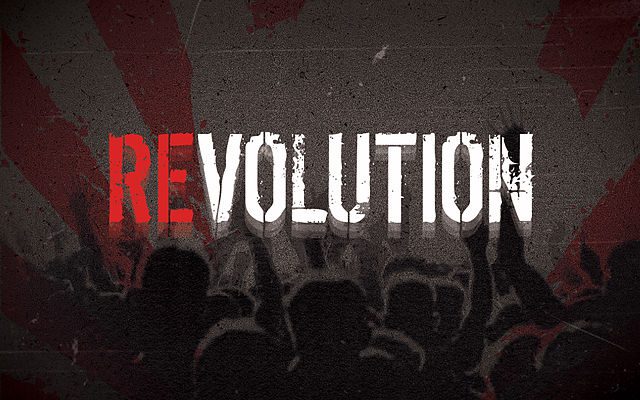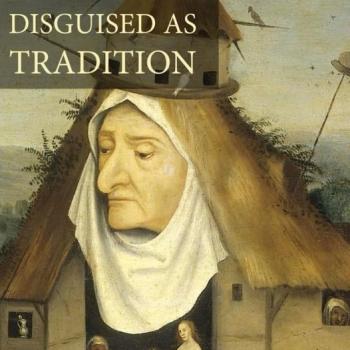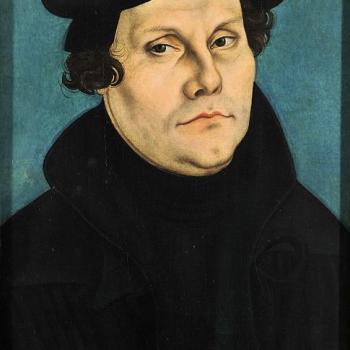
The following is a collection of lengthy excerpts from an article written by Cardinal James Francis Stafford, courtesy of Catholic News Agency, and published in California Catholic Daily (29 July 2008). It’s essential reading for all who want to understand a key event in the modernist crisis of the Church.
Everything is here: the faddishness of the theologically liberal mindset, desire for mere popular acclaim, the herd mentality, the coercive and hostile tendency, the quick irrational judgment and impulse to polarization, knee-jerk trashing of those with a traditional and orthodox opinion, etc. The Sexual Revolution of the 60s was attempting to co-opt the Catholic Church. If not for the pope, it may have done so with regard to contraception (just as we see that much of Eastern Orthodoxy has caved on this crucial moral question).
The gates of hell did not prevail, praise be to God! Our moral teaching did not change. It’s a major reason why I am writing today as a Catholic. I got sick and tired of Christian groups that were more concerned with appeasing culture and being “popular and respected” rather than appealing to Christ and being despised and rejected.
Blessed Pope Paul VI is a great hero for having stood up to this Revolt From Hell. I was received into the Church by Servant of God Fr. John A. Hardon, S. J., who also observed all of this dissent, and who stayed true to orthodoxy and the faith (and may one day be declared a saint). He used to be an advisor to Pope Paul VI, and told us (his class of Ignatian Catechists) on one occasion that Pope Paul VI suffered so greatly from this dissent that he felt as if he had a crown of thorns on his head when he went to sleep.
The Year of the Peirasmòs — 1968
By Cardinal James Francis Stafford
“Lead us not into temptation” is the sixth petition of the Our Father. Peirasmòs, the Greek word used in this passage for ‘temptation,’ means a trial or test. Disciples petition God to be protected against the supreme test of ungodly powers. The trial is related to Jesus’s cup in Gethsemane, the same cup which his disciples would also taste (Mk 10: 35-45). The dark side of the interior of the cup is an abyss. It reveals the awful consequences of God’s judgment upon sinful humanity. In August 1968, the weight of the evangelical Peirasmòs fell on many priests, including myself.
It was the year of the bad war, of complex innocence that sanctified the shedding of blood. English historian Paul Johnson dubs 1968 as the year of “America’s Suicide Attempt.” It included the Tet offensive in Vietnam with its tsunami-like effects in American life and politics, the assassination of Dr. Martin Luther King Jr. in Memphis, Tennessee; the tumult in American cities on Palm Sunday weekend; and the June assassination of Senator Robert F. Kennedy in Southern California. It was also the year in which Pope Paul VI issued his encyclical letter on transmitting human life, Humanae Vitae (HV). He met immediate, premeditated, and unprecedented opposition from some American theologians and pastors. By any measure, 1968 was a bitter cup.
On the fortieth anniversary of Humanae Vitae, I have been asked to reflect on one event of that year, the doctrinal dissent among some priests and theologians in an American archdiocese on the occasion of its publication. It is not an easy or welcome task. But since it may help some followers of Jesus to live what Pope Paul VI called a more “disciplined” life (HV 21), I will explore that event.
[ . . . ]
Cardinal Lawrence J. Shehan, the sixth Archbishop of Baltimore, was my ecclesiastical superior at the time. Pope Paul VI had appointed him along with others as additional members to the Papal Commission for the Study of Problems of the Family, Population, and Birth Rates, first established by Blessed Pope John XXIII in 1963 during the II Vatican Council. There had been discussions and delays and unauthorized interim reports from Rome prior to 1968. The enlarged Commission was asked to make recommendations on these issues to the Pope.
[ . . . ]
In a confidential letter responding to his request, I shared in a general fashion these concerns. My counsel to Cardinal Shehan was very real and specific. I had taken a hard, cold look at what I was experiencing and what the Church and society were doing. I came across an idea which was elliptical: the gift of love should be allowed to be fruitful. These two fixed points are constant. This simple idea lit up everything like lightning in a storm. I wrote about it more formally to the Cardinal: the unitive and procreative meanings of marriage cannot be separated. Consequently, to deprive a conjugal act deliberately of its fertility is intrinsically wrong. To encourage or approve such an abuse would lead to the eclipse of fatherhood and to disrespect for women. Since then, Pope John Paul II has given us the complementary and superlative insight into the nuptial meaning of the human body. Decades afterwards, I came across an analogous reading from Meister Eckhart: “Gratitude for the gift is shown only by allowing it to make one fruitful.” Some time later, the Papal Commission sent its recommendations to the Pope. The majority advised that the Church’s teaching on contraception be changed in light of new circumstances. Cardinal Shehan was part of that majority. Even before the encyclical had been signed and issued, his vote had been made public, although not on his initiative.
As we know, the Pope decided otherwise. This sets the scene for the tragic drama following the actual date of the publication of the encyclical letter on July 29, 1968.
In his memoirs, Cardinal Shehan describes the immediate reaction of some priests in Washington to the encyclical: “[A]fter receiving the first news of the publication of the encyclical, the Rev. Charles E. Curran, instructor of moral theology of The Catholic University of America, flew back to Washington from the West where he had been staying. Late [on the afternoon of July 29], he and nine other professors of theology of the Catholic University met, by evident prearrangement, in Caldwell Hall to receive, again by prearrangement with theWashington Post, the encyclical, part by part, as it came from the press. The story further indicated that by nine o’clock that night, they had received the whole encyclical, had read it, had analyzed it, criticized it, and had composed their six-hundred word ‘Statement of Dissent.’ Then they began that long series of telephone calls to ‘theologians’ throughout the East, which went on, according to the Post, until 3:30 a.m., seeking authorization to attach their names as endorsers (signers was the term used) of the statement, although those to whom they had telephoned could not have had an opportunity to see either the encyclical or their statement. Meanwhile, they had arranged through one of the local television stations to have the statement broadcast that night.”
The Cardinal’s judgment was scornful. In 1982 he wrote, “The first thing that we have to note about the whole performance is this: so far as I have been able to discern, never in the recorded history of the Church has a solemn proclamation of a Pope been received by any group of Catholic people with so much disrespect and contempt.”
The personal Peirasmòs, the test, began. In Baltimore in early August 1968, a few days after the encyclical’s issuance, I received an invitation by telephone from a recently ordained assistant pastor to attend a gathering of some Baltimore priests at the rectory of St. William of York parish in southwest Baltimore to discuss the encyclical. The meeting was set for Sunday evening, August 4. I agreed to come. Eventually a large number of priests were gathered in the rectory’s basement. I knew them all.
The dusk was clear, hot, and humid. The quarters were cramped. We were seated on rows of benches and chairs and were led by a diocesan inner-city pastor well known for his work in liturgy and race relations. There were also several Sulpician priests present from St. Mary’s Seminary in Baltimore to assist him in directing the meeting. I don’t recall their actual number.
My expectations of the meeting proved unrealistic. I had hoped that we had been called together to receive copies of the encyclical and to discuss it. I was mistaken. Neither happened. After welcoming us and introducing the leadership, the inner-city pastor came to the point. He expected each of us to subscribe to the Washington “Statement of Dissent.” Mixing passion with humor, he explained the reasons. They ranged from the maintenance of the credibility of the Church among the laity, to the need to allow ‘flexibility’ for married couples in forming their consciences on the use of artificial contraceptives. Before our arrival, the conveners had decided that the Baltimore priests’ rejection of the papal encyclical would be published the following morning in The Baltimore Sun, one of the daily newspapers.
The Washington statement was read aloud. Then the leader asked each of us to agree to have our names attached to it. No time was allowed for discussion, reflection, or prayer. Each priest was required individually to give a verbal “yes” or “no.”
I could not sign it. My earlier letter to Cardinal Shehan came to mind. I remained convinced of the truth of my judgment and conclusions. Noting that my seat was last in the packed basement, I listened to each priest’s response, hoping for support. It didn’t materialize. Everyone agreed to sign. There were no abstentions. As the last called upon, I felt isolated. The basement became suffocating. By now it was night. The room was charged with tension. Something epochal was taking place. It became clear that the leaders’ strategy had been carefully mapped out beforehand. It was moving along without a hitch. Their rhetorical skills were having their anticipated effect. They had planned carefully how to exert what amounted to emotional and intellectual coercion. Violence by overt manipulation was new to the Baltimore presbyterate.
The leader’s reaction to my refusal was predictable and awful. The whole process now became a grueling struggle, a terrible test, a Peirasmòs. The priest/leader, drawing upon some scatological language from his Marine Corp past in the II World War, responded contemptuously to my decision. He tried to force me to change. He became visibly angry and verbally abusive. The underlying ‘fraternal’ violence became more evident. He questioned and then derided my integrity. He taunted me to risk my ecclesiastical ‘future,’ although his reference was more anatomically specific. The abuse went on.
With surprising coherence, I was eventually able to respond that the Pope’s encyclical deserved the courtesy of a reading. None of us had read it. I continued that, as a matter of fact, I agreed with and accepted the Pope’s teaching as it had been reported in the public media. That response elicited more ridicule. Otherwise there was silence. Finally, seeing that I would remain firm, the ex-Marine moved on to complete the business and adjourn the meeting. The leaders then prepared a statement for the next morning’s daily paper.
The meeting ended. I sped out of there, free but disoriented. Once outside, the darkness encompassed me. We all had been subjected to a new thing in the Church, something unexpected. A pastor and several seminary professors had abused rhetoric to undermine the truth within the evangelical community. When opposed, they assumed the role of Job’s friends. Their contempt became a nightmare. In the night, it seemed that God’s blind hand was reaching out to touch my face.
The dissent of a few Sulpician seminary professors compounded my disorientation. In their ancient Baltimore Seminary I had first caught on to the connection between freedom, interiority, and obedience. By every ecclesial measure they should have been aware that the process they supported that evening exceeded the “norms of licit dissent.” But they showed no concern for the gravity of that theological and pastoral moment. They saw nothing unbecoming in the mix of publicity and theology. They expressed no impatience then or later over the coercive nature of the August meeting. Nor did any of the other priests present. One diocesan priest did request privately later that night that his name be removed before the statement’s publication in the morning paper.
For a long time, I wondered about the meaning of the event. It was a cataclysm which was difficult to survive intact. . . . The subterranean world that has always accompanied Catholic communities, called Gnosticism by our ancestors, had again surfaced and attempted to usurp the truth of the Catholic tradition.
[ . . . ]
Something else happened among priests on that violent August night. Friendship in the Church sustained a direct hit. Jesus, by calling those who were with him his ‘friends,’ had made friendship a privileged analogy of the Church. That analogy became obscured after a large number of priests expressed shame over their leaders and repudiated their teaching.
Cardinal Shehan later reported that on Monday morning, August 5, he “was startled to read in the Baltimore Sun that seventy-two priests of the Baltimore area had signed the Statement of Dissent.” What he later called “the years of crisis” began for him during that hot, violent August evening in 1968.
But that night was not a total loss. The test was unexpected and unwelcome. Its unhinging consequences continue. Abusive, coercive dissent has become a reality in the Church and subjects her to violent, debilitating, unproductive, chronic controversies. But I did discover something new. Others also did. When the moment of Christian witness came, no Christian could be coerced who refused to be. Despite the novelty of being treated as an object of shame and ridicule, I did not become “ashamed of the Gospel” that night and found “sweet delight in what is right.” It was not a bad lesson. Ecclesial obedience ran the distance.
My discovery that Christ was the first to despise shame was gut rending in its existential and providential reality. “Let us run with perseverance the race that is set before us, looking to Jesus the pioneer and perfecter of our faith, who for the joy that was set before him endured the cross, despising the shame.” Paradoxically, in the hot, August night a new sign shown unexpectedly on the path to future life. It read, “Jesus learned obedience through what he suffered.”
The violence of the initial disobedience was only a prelude to further and more pervasive violence. Priests wept at meetings over the manipulation of their brothers. Contempt for the truth, whether aggressive or passive, has become common in Church life. Dissenting priests, theologians and laypeople have continued their coercive techniques. From the beginning, the press has used them to further its own serpentine agenda.
All of this led to a later discovery. Discernment is an essential part of episcopal ministry. With the grace of “the governing Spirit” the discerning skills of a bishop should mature. Episcopal attention should focus on the break/rupture initiated by Jesus and described by St. Paul in his response to Corinthian dissenters. “You desire proof that Christ is speaking in me. He is not weak in dealing with you, but is powerful in you. For he was crucified in weakness, but lives by the power of God. For we are weak in him, but in dealing with you we shall live with him by the power of God. Examine yourselves, to see whether you are holding to your faith. Test yourselves” (2 Cor 13: 3-5).
[ . . . ]
Diocesan presbyterates have not recovered from the July/August nights in 1968. Many in consecrated life also failed the evangelical test. Since January 2002, the abyss has opened up elsewhere. The whole people of God, including children and adolescents, now must look into the abyss and see what dread beasts are at its bottom. Each of us shudders before the wrath of God, each weeps in sorrow for our sins and each begs for the Father’s merciful remembrance of Christ’s obedience.
***
(originally 7-29-08)
Photo credit: Image by LatheeshMahe (5-14-15) [Wikimedia Commons / Creative Commons Attribution-Share Alike 4.0 International license]
***













